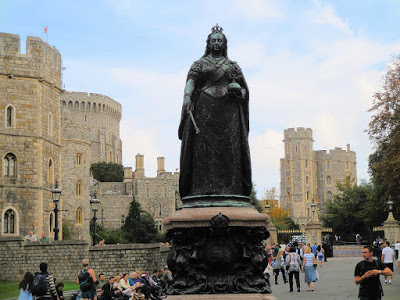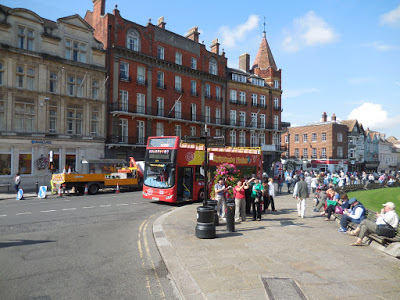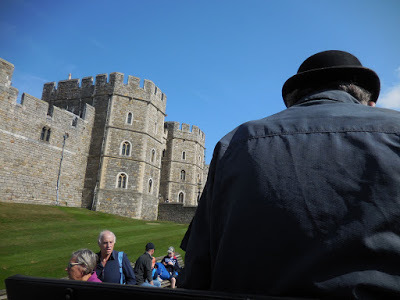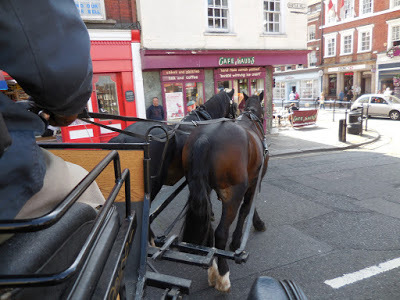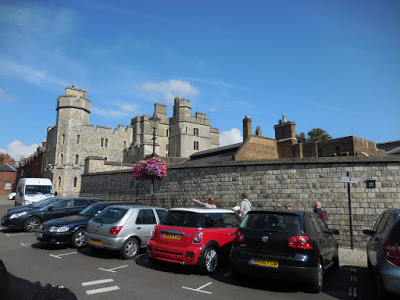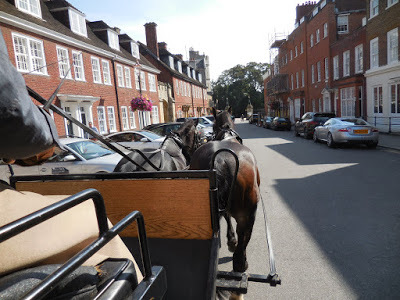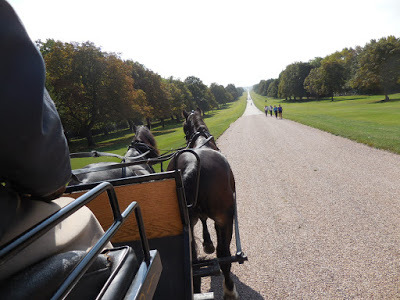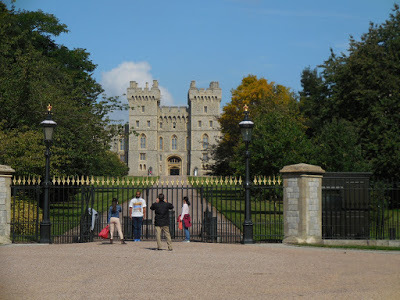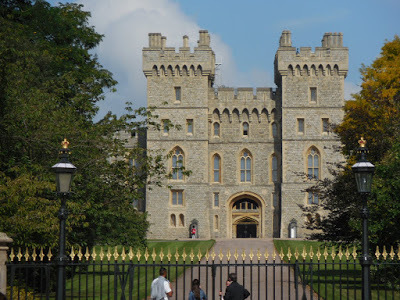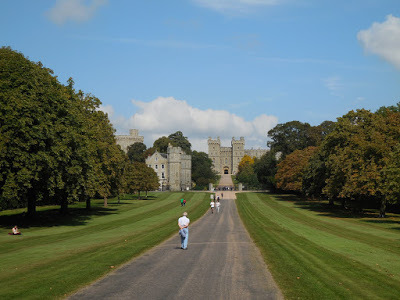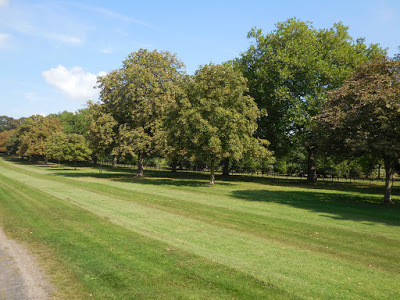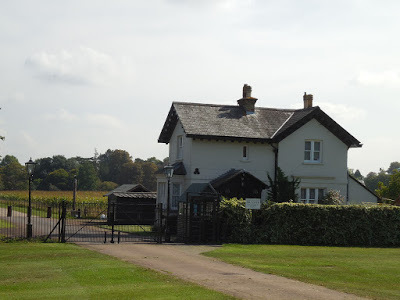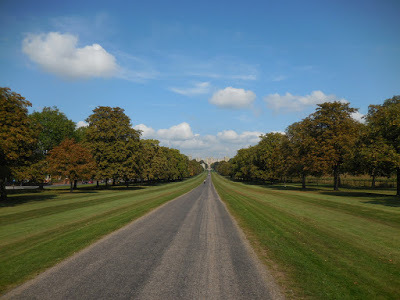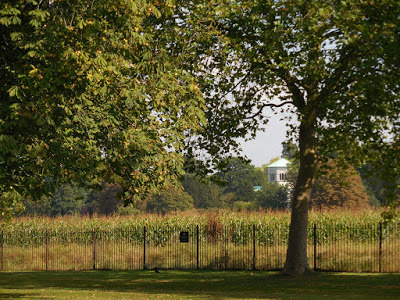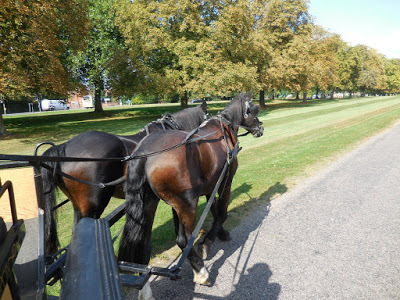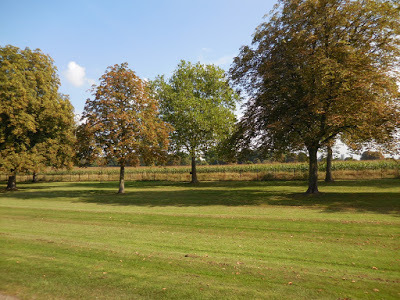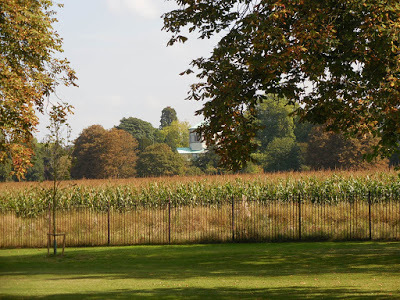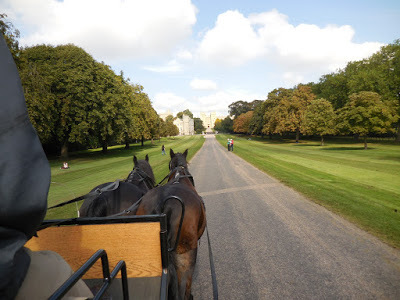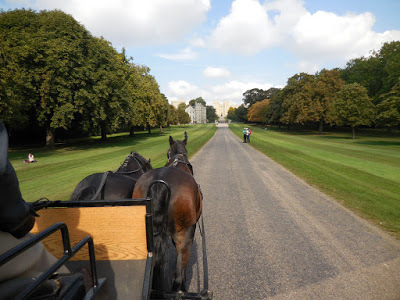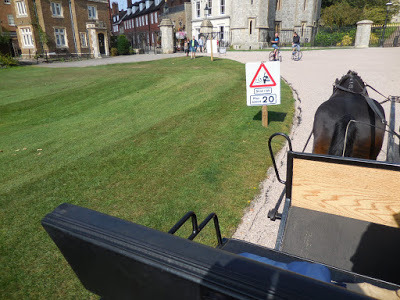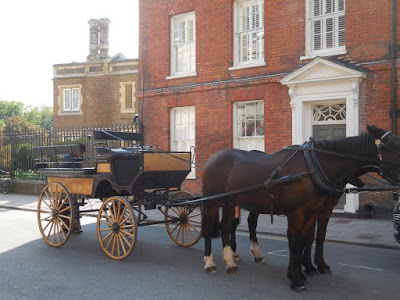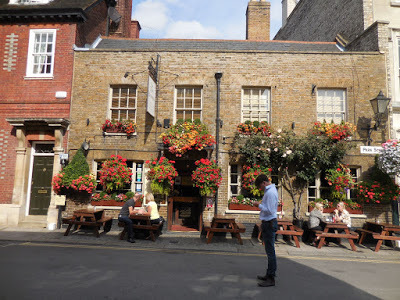Kristine Hughes's Blog, page 64
January 31, 2016
THOUGHTS ON WELLINGTON BY GUEST BLOGGER DIANE PERKINS
What a delight to be a guest blogger at Number One London, one of my favorite blogs.
This piece was first written for Risky Regencies on June 28, 2009, but I could have written it after Kristine and Vicky’s Duke of Wellington Tour. It’s worth a revisit, though, (slightly edited) because, well, it’s about the Duke of Wellington!As a certified Wellington Groupie (Kristine Hughes is the founding member) and in continuing honor of the Waterloo Anniversary, I thought I would simply share some of my Wellington-related photos and thoughts. Kristine is the real expert and I didn’t check any facts, so I might not be 100% accurate in all I say.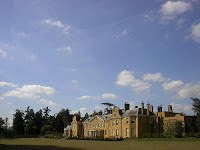
When I first fell in raptures about Wellington (or dear Artie, as Kristine and I call him), it was at Stratfield Saye, Wellington’s country house. Of all the houses we saw on that 2003 trip to England, Stratfield Saye seemed the most like it was a home. It was a home. The present duke’s son and his family live there, but you could feel the first Duke there in every room. In an outer building there house was the funeral carriage that carried the Duke’s body through London. A recording played of all his honors, as had been read out during his funeral. I realized that this had been a truly great man.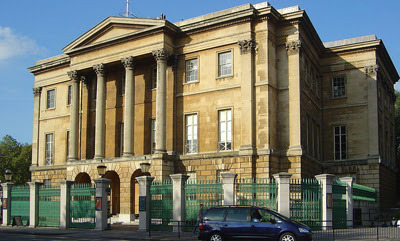
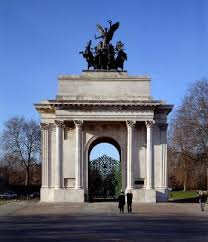
On that trip we also got to go up to the top of the Wellington Arch in London, and of course we toured Apsley House, also known as Number One London. Apsley House felt more like a museum than a house and well it should. It was filled with wonderful art and artifacts.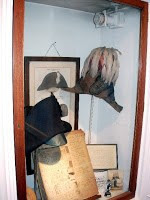
Also in London we visited Lock and Co, a Hatters shop that has been in Mayfair since 1676. On display there are Wellington’s and Nelson’s hats, instantly recognizable.I don’t claim to be an expert on Wellington. I’ve just read one biography (and can’t remember which one it was), but I think of him as a man with great integrity, courage and honor. As a boy he didn’t show much promise, but his mother sent him to a military academy in Europe (near Waterloo, I think) and he found his strength. As a military man he understood how to use his resources, he was clever, and he was brave. He rode the battlefield during Waterloo, was everywhere he could be and ignored the danger to himself. He cared about his men. One of my favorite Wellington quotes is: “Nothing except a battle lost can be half so melancholy as a battle won.” He was not a good husband, although he felt honor-bound to marry his wife, because she thought they were betrothed and had waited for him while he served in India. He had many dalliances throughout their marriage and one has to wonder how his wife felt as this man grew in greatness and increasingly left her behind. His sons could not match his success. Who could? I like this quote from his son after the Duke’s death, “Imagine what it will be when the Duke of Wellington is announced, and only I walk in the room.”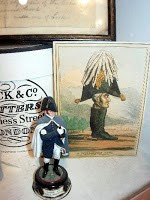
The Duke was a man who was very sure of himself and his opinions. I suspect he had a big ego, but he also had a sense of humor. In the display at Lock and Co. was a little caricature of Wellington, making fun of the term Wellington boot for the style of boot he favored. At Stratfield Saye there was a room papered with hundreds of caricatures of the Duke, which I thought was akin to a writer papering a bathroom with rejection letters. The boot one was was there, too.What is your opinion of the Duke of Wellington? Pro and Con. Any favorite quotes or vignettes of his life? Diane Gaston is the award-winning author of Regency-set historical romances. Her next book, Bound By One Scandalous Night, Book 2 in the Scandalous Summerfields series, will be released March 22, 2016, from Harlequin Historical.
This piece was first written for Risky Regencies on June 28, 2009, but I could have written it after Kristine and Vicky’s Duke of Wellington Tour. It’s worth a revisit, though, (slightly edited) because, well, it’s about the Duke of Wellington!As a certified Wellington Groupie (Kristine Hughes is the founding member) and in continuing honor of the Waterloo Anniversary, I thought I would simply share some of my Wellington-related photos and thoughts. Kristine is the real expert and I didn’t check any facts, so I might not be 100% accurate in all I say.

When I first fell in raptures about Wellington (or dear Artie, as Kristine and I call him), it was at Stratfield Saye, Wellington’s country house. Of all the houses we saw on that 2003 trip to England, Stratfield Saye seemed the most like it was a home. It was a home. The present duke’s son and his family live there, but you could feel the first Duke there in every room. In an outer building there house was the funeral carriage that carried the Duke’s body through London. A recording played of all his honors, as had been read out during his funeral. I realized that this had been a truly great man.


On that trip we also got to go up to the top of the Wellington Arch in London, and of course we toured Apsley House, also known as Number One London. Apsley House felt more like a museum than a house and well it should. It was filled with wonderful art and artifacts.

Also in London we visited Lock and Co, a Hatters shop that has been in Mayfair since 1676. On display there are Wellington’s and Nelson’s hats, instantly recognizable.I don’t claim to be an expert on Wellington. I’ve just read one biography (and can’t remember which one it was), but I think of him as a man with great integrity, courage and honor. As a boy he didn’t show much promise, but his mother sent him to a military academy in Europe (near Waterloo, I think) and he found his strength. As a military man he understood how to use his resources, he was clever, and he was brave. He rode the battlefield during Waterloo, was everywhere he could be and ignored the danger to himself. He cared about his men. One of my favorite Wellington quotes is: “Nothing except a battle lost can be half so melancholy as a battle won.” He was not a good husband, although he felt honor-bound to marry his wife, because she thought they were betrothed and had waited for him while he served in India. He had many dalliances throughout their marriage and one has to wonder how his wife felt as this man grew in greatness and increasingly left her behind. His sons could not match his success. Who could? I like this quote from his son after the Duke’s death, “Imagine what it will be when the Duke of Wellington is announced, and only I walk in the room.”

The Duke was a man who was very sure of himself and his opinions. I suspect he had a big ego, but he also had a sense of humor. In the display at Lock and Co. was a little caricature of Wellington, making fun of the term Wellington boot for the style of boot he favored. At Stratfield Saye there was a room papered with hundreds of caricatures of the Duke, which I thought was akin to a writer papering a bathroom with rejection letters. The boot one was was there, too.What is your opinion of the Duke of Wellington? Pro and Con. Any favorite quotes or vignettes of his life? Diane Gaston is the award-winning author of Regency-set historical romances. Her next book, Bound By One Scandalous Night, Book 2 in the Scandalous Summerfields series, will be released March 22, 2016, from Harlequin Historical.
Published on January 31, 2016 23:30
January 28, 2016
POST WELLINGTON TOUR - THE WINDSOR GREYS
Both Victoria and I were looking forward to seeing to seeing the Windsor Greys when we were there last. The term Windsor Grey is given to grey horses used by the Royalty of the United Kingdom to draw carriages and coaches in various ceremonial processions and, since 1986, when The Queen is Trooping the Colour. They are stabled in the Royal Mews. Some have also represented the crown in various carriage combined driving competitions, at times driven by Prince Phillip, the Duke of Edinburgh.
Two Windsor Grey horses, Claudia and Storm, at the Royal Mews in London are available for observation daily. Storm was featured in a statue with another of the type, David. Back in 2012, we ran a post on the drive to raise money to fund the Windsor Greys Jubilee Appeal which was the committe charged with delivering a statue of the horses in time for the Queen's Diamond Jubilee. Really, these horses couldn't be a more fitting symbol to honour Her Majesty, who has such an affinity for horses, and because of their link to Royal traditions.
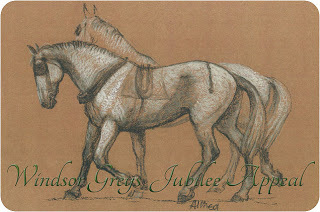
Thankfully, and not surprisingly, the money was raised and sculptor Robert Rattray executed the statue in bronze, which took over a year to complete, and was on hand when Her Majesty unveiled the life sized piece in March of 2014.
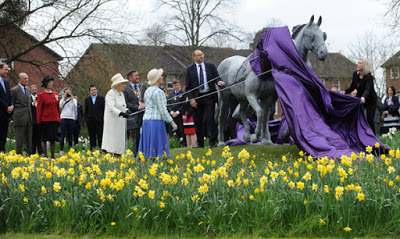
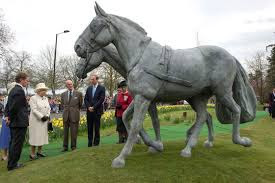
The statue stands in the middle of the Kings Road/Osborne Road roundabout, ready to greet visitors.
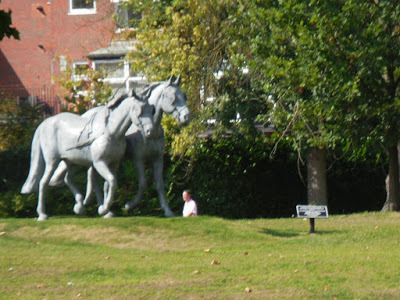
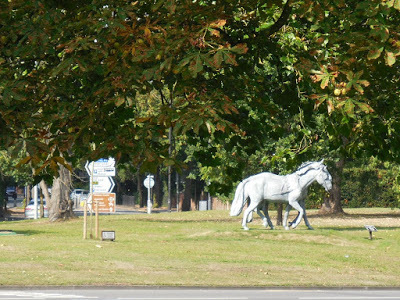
As stated above, you can see the Greys at the Royal Mews in London. Below is a display showing how the Greys look when pulling the Royal carriages.
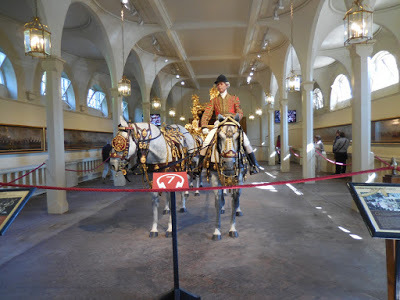
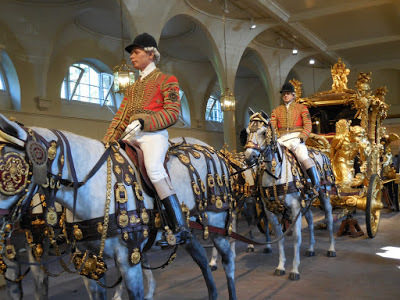
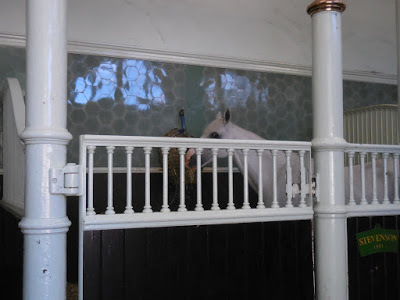
Above and below, Stevenson, one of the horses who are regularly used on the Royal carriages in his stall at the Royal Mews. Victoria snapped these photos while we were there for the Duke of Wellington Tour.
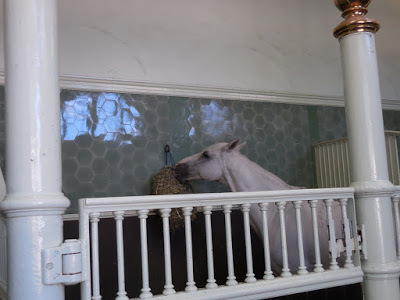
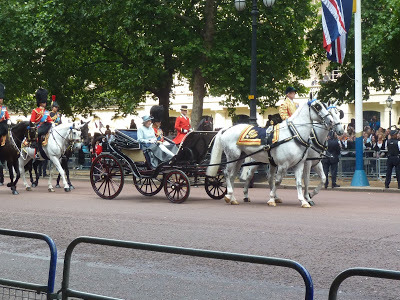
2011 Trooping the Colour
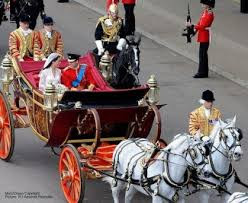
The Royal wedding.
Published on January 28, 2016 23:30
January 26, 2016
REGENCY HEROES BY GUEST BLOGGER DIANE GASTON

Diane Gaston here, very happy to be a guest blogger on Number One London. This piece, slightly edited here, first appeared on Risky Regencies on April 24, 2006.Let’s face it. I’m in this business, writing Regency Historical Romance, for the heroes.
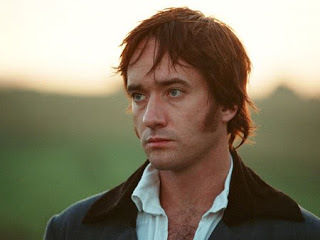
What could be better than spending your days with some hunky gentleman in pantaloons, Hessians, and a coat by Weston, who says things like, “You’ve bewitched me, body and soul.”Sigh!The Regency gives us such wonderful heroes. Wealthy marquesses and dukes. disreputable Rakes (as opposed to my Reputable Rake, Harlequin Historical, May 2006, still available in ebook), corinthians, gamblers, impoverished vicars, and my favorite–The soldier.
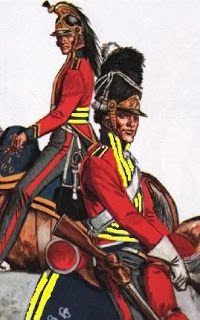
I’m with Mrs. Bennett when, in Pride and Prejudice, she says, “I remember the time when I liked a red coat myself very well—and, indeed, so I do still at my heart.”That’s me. Show me a man in his regimentals and I’ll show you a potential hero.Maybe I love military heroes because my father was an Army colonel. I grew up with that whole military mind-set of duty and honor and country. Woke up to reveille. Went to sleep hearing taps. Or maybe it was listening to all those Chivers audiotapes of the Sharpe series, hearing William Gaminara read, “Sharpe swore.”Writing a soldier for a hero gives so much dramatic potential. The hero faced hardship, faced death, experienced scenes we would find horrific. He’s honed his body to be strong. When he returns to England from war, he must look on the society to which he returns in a whole new light. I think it makes for lots of interesting possibilities.I have a brazillion books on the Napoleonic war. Three of my favorites are:Waterloo: Day of Battle by David Armine Howarth. It tells the story of Waterloo from the soldiers point of view.Redcoat: The British Soldier in the Age of Horse and Musket by Richard Holmes, This book covers everything about being a soldier during that time period.Galloping at Everything: The British Cavalry in the Peninsular War and at Waterloo, 1808-15 by Ian Fletcher. This covers all the major operations engaging the cavalry and discusses some of the controversy around them.I have another book that makes me sad: Intelligence Officer in the Peninsula, Julia Page, editor. These are the letters and diaries of Major the Hon. Edward Charles Cocks, a man who loved soldiering with a passion that makes the journals occasionally boring. It makes me sad because the war takes his life. Even Wellington grieves his loss.
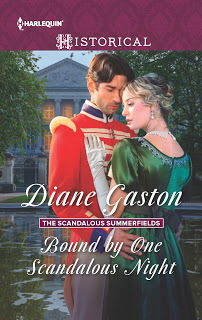
I’d love to write a series of Napoleonic war love stories, sort of Bernard Cornwell-style but with a really satisfying romance. I haven’t quite done it yet, but I did write a series of soldier books that featured part of the war. And my last book, Bound By Duty, ends with the Battle of Waterloo. My next book, Bound By One Scandalous Night, begins right before the battle. Okay, let’s face it. I just want to spend my days with some hunky officer in regimentals.DianeDiane Gaston is the award-winning author of over 20 Regency Historical Romances.
Published on January 26, 2016 23:30
January 24, 2016
CURTAIN UP: CELEBRATING 40 YEARS OF THEATRE IN LONDON AND NEW YORK

The V&A will this February celebrate the rich creative theatre talent in the West End of London and New York’s Broadway, two world class centres of theatrical excellence. Curtain Up: Celebrating 40 Years of Theatre in London and New York will explore the extraordinary range of craft and collaboration that goes into creating award-winning plays, musicals and productions. The show will be a free and immersive theatrical experience taking visitors from the stage, to the design workshops and through the history of the awards to the red carpet.
Curated by the V&A and The New York Public Library for the Performing Arts at Lincoln Center, in partnership with the Society of London Theatre (SOLT),Curtain Up is part of a year-long programme of activity organised by SOLT to celebrate 40 years of the Olivier Awards (1976-2016), awarded annually to recognise excellence in professional theatre.
Curtain Up is designed by RFK Architects and Tom Piper, the acclaimed designer and theatre maker renowned for his Tower of London poppies installation,Blood Swept Lands And Seas of Red, a collaboration with ceramic artist Paul Cummins. Curtain Up will bring together costumes, designs, models, photographs, archival production material, film and awards, much on display for the first time.
On display will be objects drawn from the collections of the V&A and The Library for the Performing Arts supplemented with key loans from private collections. Highlights include original costume designs from The Phantom of the Opera by Maria Bjornson (1986), one of the longest running West End musicals, and the longest running Broadway production in history, shown alongside the costume worn by a recent West End Phantom; a selection of golden top hats from A Chorus Line which won both the Tony Award (1976) and the inaugural Olivier Award (1976) for Best New Musical; a tunic worn by Rudolf Nureyev in Romeo and Juliet which won the Olivier in 1977; and Dame Helen Mirren DBE’s dress designed by Bob Crowley and worn in The Audience, a role which she won both an Olivier (2013) and Tony Award (2015) for Best Actress.
Dame Helen Mirren DBE said; “Having worked on both Broadway and the West End, I am delighted that Curtain Up, marking 40 years since the Olivier Awards were inaugurated, honours the shared artistic heritage binding London and New York and showcases the wealth of creative talent that brings great productions to the stage on both sides of the Atlantic.”
Curtain Up will consider the central role the West End and Broadway have in London and New York today as well as exploring the evolution of these two transatlantic theatre cities. A spotlight on the awards will reveal how they have developed since their inception and how an entire company – from back-of-house to centre stage – contribute to an award-winning production including such material as correspondence and production material relating to the original production of Evita. Script-writing, production, direction, design (lighting, sound, set, and costume), music, choreography and the evolution of technology will all be considered.
Plays and musicals which have performed well both in London and New York will be highlighted with costumes on display from Disney’s The Lion King, designed by Julie Taymor, costume designs by William Ivey Long for Chicago and The Producers and Christopher Oram’s costume designs for the Royal Shakespeare Company’s Wolf Hall and Bring Up the Bodies.
There will be the opportunity to see the set models for Matilda the Musical, an RSC musical which won seven Olivier awards and five Tony awards, designed by Rob Howell as well as models from the National Theatre’s award-winning production War Horse (2007). On display for the first time in the UK will be set models for the New York productions of Carousel (1994) and Sunday in the Park with George (1983).
Film clips from notable theatre productions from the V&A’s National Video Archive of Performance (NVAP) and the NYPL’s Theatre on Film and Tape archive (TOFT) will be embedded throughout.
Published on January 24, 2016 23:30
January 21, 2016
POST WELLINGTON TOUR - WHAT WE SAW ON OUR CARRIAGE RIDE THROUGH WINDSOR GREAT PARK
Published on January 21, 2016 23:30
January 20, 2016
WHAT KRISTINE SAW ON THE WELLINGTON TOUR: DOORS
Published on January 20, 2016 00:00
January 18, 2016
THE WELLINGTON CONNECTION: CHILDREN

The Thorburn painting of The Duke surrounded by his grand-children in the library at Stratfield Saye. The boy in blue became the 4th Duke.
I believe that one of the reasons the Duke of Wellington remains eternally fascinating is because he was quite a complex human being who, like each of us, had many sides. One of the most endearing of these was his love of children, which is puzzling considering the stilted and often painful relationship he had with his own two sons. Wellington enjoyed the company of children from the time he was a young adult, playing with the Duke of Richmond's children in Ireland and racing the Duke through the park whilst each of them rode a child piggyback. There are many other instances of the Duke's playful side, including the following: The Life of Wellington by Sir Herbert Maxwell14th June, 1815.
"The Duke of Wellington seems to unite those two extremes of character which Shakespeare gives to Henry V.—the hero and the trifler. You may conceive him at one moment commanding the allied armies in Spain or presiding at the conference at Vienna, and at another time sprawling on his back or on all fours upon the carpet playing with the children.
A Sketch of the Life of Georgiana, Lady de Ros By Blanche Arthur Georgina Swinton
The Duke's kindness to children is well-known; when he invited his friends to visit him, their children were always included; and on one occasion, passing through the room where some of his juvenile guests were at tea (I rather think the present Premier was one!), he was very angry at finding they had no jam, and instantly gave orders it was never to be omitted! When my little girl of five years old—his god-daughter—worked him a pincushion, he apologised for his delay in writing to thank her! When we assembled for dinner, we usually found the Duke, who had dressed early, engaged in a regular game of romps with the children, who came down on purpose for what they called the Battle of Waterloo, which commenced by one of them throwing a cushion at the newspaper the Duke was reading.
Wellington the Beau by Patrick DelaforceOf Mary, the second Lady Salisbury. Not only were her first three children named after the Duke - Sackville Arthur born in 1848, Mary Arthur in 1850 and Arthur born in 1851; but she convalesced after each confinement at Walmer Castle. Every summer she and her offspring spent happy weeks there and the old Duke regarded them as his own grandchildren. . . . . He designed medals for them made up of shillings and ribbons, and allowed `Your Babes' to romp where they wished. He devised a baby jumper machine for them to be suspended safely from the ceiling. The conqueror of Europe was such a genial lover of very small children.
Notes of Conversations with the Duke of Wellington, 1831-1851 by Earl Philip Henry Stanhope Stanhope
The Duke has now staying with him (at Walmer Castle) two little children of Lord and Lady Robert Grosvenor, who are gone abroad, and his conduct to these chicks displays a kindheartedness and warmth of feeling such as their own parents could not surpass, but such as the Duke displays to all. Lady Mahon was told by Lady Mary Grimston who was staying in the house, that the children having expressed their desire to receive letters by the post, the Duke every morning writes a little letter to each of them, containing good advice for the day, which is regularly delivered to them when the post comes in.
While he had a playful side, Wellington also had a sense of responsibility where the welfare of children was concerned. He and the Duchess of Wellington took in and cared for the children of family and friends whenever the need arose, including the two sons of his brother, Henry, who was unprepared to care for them when his wife left him for the Marquess of Angelsey. At Walmer, Wellington took it upon himself to visit the children of his neighbor, Mrs. Jenkins, whilst that lady was away. The two mites suffered a bout of measles and Wellington sent his own doctor to see them every day and every day wrote to Mrs. Jenkins to keep her up to date on their recovery. Below you will find further examples of Wellington's quiet benevolence, although I'm certain there are many more that will never come to light.
Wellingtoniana: Anecdotes, Maxims, and Characteristics, of the Duke of Wellington, Volume 4 edited by John Timb
During the late war in the Punjab, Captain Field, of her Majesty's 9th regiment of foot, was killed in action at Ferozepore. His widow sailed down the Ganges with her three children (two daughters and a son) for Caleutta, on her way to England. The daughters both died of cholera at Caleutta. Mrs. Field, with her only remaining child, then embarked for her native country; but she herself died on the passage, and was committed to the deep off St. Helena, consigning her orphan son to his grandfather, Captain Farrant, whose death occurred before the ship's arrival. Captain Farrant's widow (stepmother to Mrs. Field) took charge of the poor child; and her sister, Miss White, addressed the Duke of Wellington, as Commander-in-Chief, in the little orphan's behalf. The following was the highly characteristic reply of the illustrious Duke :—
"London, Jume 23, 1846."F. M. the Duke of Wellington, presents his compliments to Miss White. He has received her note. The Duke, in his capacity of Commander-in-Chief of the army, has not the power or authority to order or authorise the expenditure of one shilling of public money on any account or upon any service whatever. The Secretary at War is the officer entrusted exclusively with the administrations of the laws and regulations for the grant ofpensions to the widows and allowances to the orphans of the officers of the army. The Commanderin-Chief has no control over that officer or his duties, and it is inconsistent with his duty to interfere in them. Miss White or Mrs. Farrant must apply to the Secretary at War."But though a high sense of duty prevented him from interfering, as Commander-in-Chief, in the child's behalf, the touching tale failed not to move his benevolent sympathies: for, after considering how best he could befriend the case, he directed a communication to be made officially through Lord Fitzroy Somerset, that his Grace 'had procured for him a presentation to Christ's Hospital. The little fellow, W. Field, is now there, in No. 7, enjoying the judicious exercise of his illustrious patron's benevolence; and, the boy's bent being for the army, it is hoped that a commission may hereafter be obtained for him on leaving that excellent institution.
The Life of Wellington by Sir Herbert Maxwell
The following anecdote, told by Stocqueler, is well authenticated, and illustrates at once the Duke's great love of children, and his thoughtfulness for their welfare. The son of Kendall, the Duke's valet, was at school near Strathfieldsaye, and was spending a day with his father at Apsley House. The Duke's bell rang; Kendall, answering it, was followed by the lad into the study."Whose boy is that?" asked the Duke quickly."Mine, your Grace," replied Kendall, "and I humbly ask your Grace's pardon for his coming into the room, not knowing your Grace was here.""Oh! that is nothing," quoth the Duke; "but I didn't know you had a son, Kendall. Send him in and leave him with me."So the boy—greatly trembling—was sent in to the Duke, who asked him if he knew to whom he was speaking. "Yes, sir—your Grace, I mean.""Oh, my little fellow," answered the Duke, "it will be easier for you to call me 'sir.' You call your schoolmaster 'sir,' don't ye? Call me 'sir' too, if you choose. Now I wonder if you can play draughts." "Yes, sir."
"Come on then; we'll have a game, and I'll give you two men."Down they sat; the boy said afterwards that he really thought he was going to win the second game, but his doughty antagonist laid a trap for him, and chuckled mightily when he fell into it.The games over, the Duke asked the boy a lot of questions in geography, and then said—"Well, you shall dine with me to-day; but I shall not dine yet: would you like to see my pictures?" and he trotted him round the great gallery. Then the Duke took him among the statues—" important fellows " he said they were—but the boy said he preferred the pictures."I thought so," observed the Duke; "but tell me—which of these is most like your schoolmaster?"Young Kendall picked out a bust without moustaches, which happened to be a likeness of the Duke himself."Oh! well," laughed the Duke, "that is a very good man of his sort. Come now, we'll go to dinner. I have ordered it early, as I suppose you dine early at school.""At one o'clock, sir," said the lad."A very good hour," said the Duke. "I used to dine at one when I was at school."They sat down tete-a-tete, the anxious father being told that the bell would ring when he was required. Having said grace, the Duke told the boy that he would give him a little of every dish, as he knew boys liked to taste all they saw. Dinner over, the lad was dismissed with the injunction—"Be a good boy; do your duty; now you may go to your father."About four years later the Duke was detained on the South Eastern railway for two hours, when travelling to attend a meeting of the Privy Council. He was exceedingly indignant, and communicated his complaint to Mr. Macgregor, chairman of the company. Nothing more is known of the incident, except this, that immediately afterwards young Kendall was appointed to a clerkship in Mr. Macgregor's bank at Liverpool, after which he was transferred to the Ordnance Department in Ireland. The presumption is fair that the Duke supplemented his income during the early years of his clerkship, which is always insisted upon in a bank, and which must have been far beyond the means of his father to do.
Published on January 18, 2016 00:30
January 15, 2016
POST WELLINGTON TOUR: A STROLL THROUGH ETON
On the day after the Wellington Tour ended, Sunday 9/14, Victoria and I remained at the Castle Hotel in Windsor for a few days in order to rest up and see the sights of Windsor we hadn't taken in before.
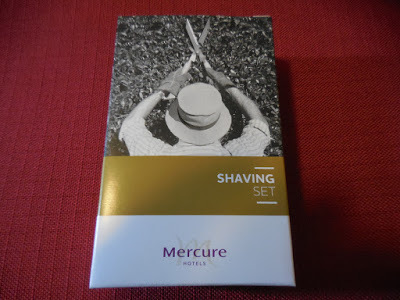
Before we started out for the day, Victoria noticed this complimentary material in our hotel room, and the picture greatly amused her.
Amongst the scintillating things on our agenda was a walk to station in order to ask about our getting to Hampstead in the near future. We also visited a number of the town's more tacky souvenier shops in order to stock up on touristy shot glasses and key rings.
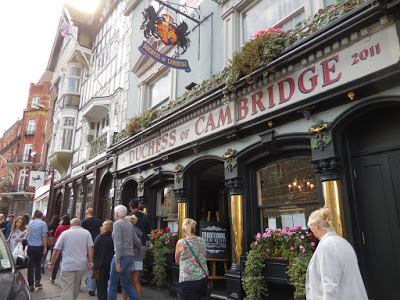
Afterwards, we took a leisurely stroll across the River and strolled the length of Eton's deserted High Street.
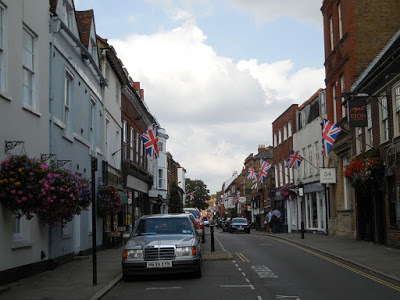
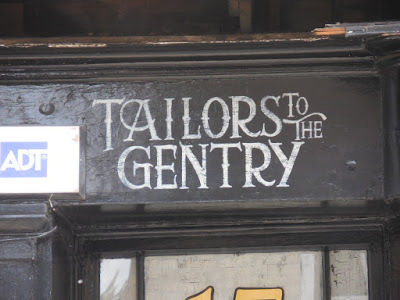
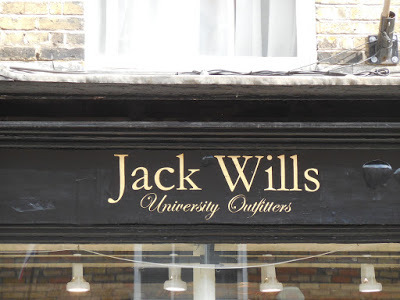
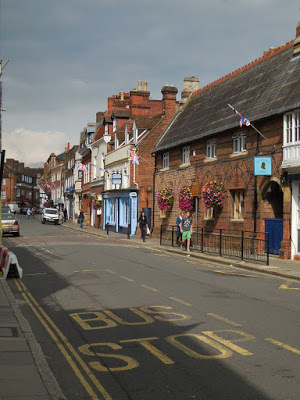
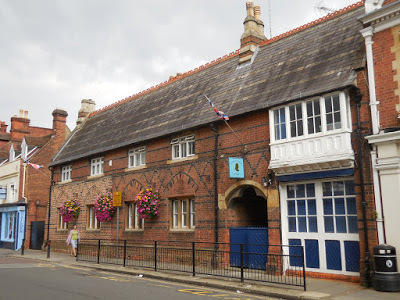
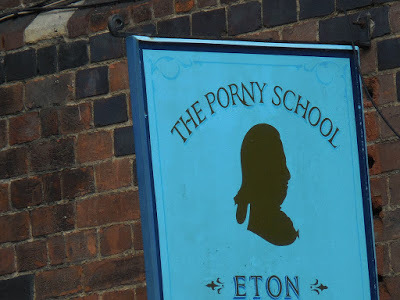
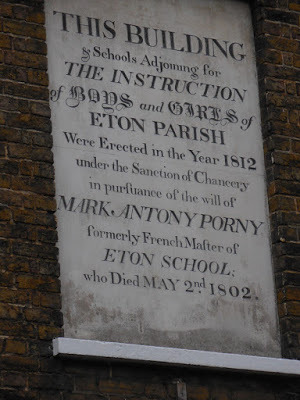
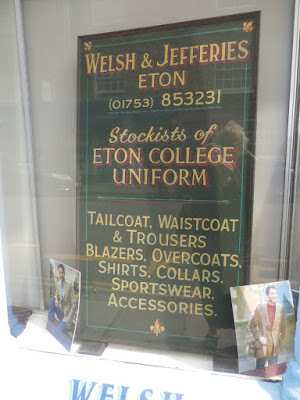
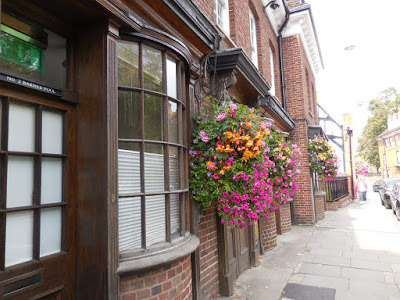
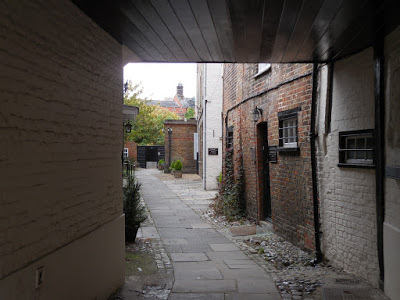
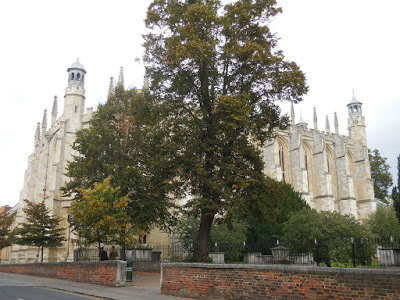
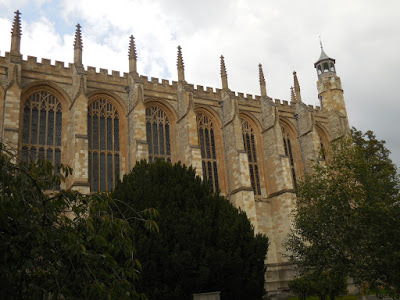
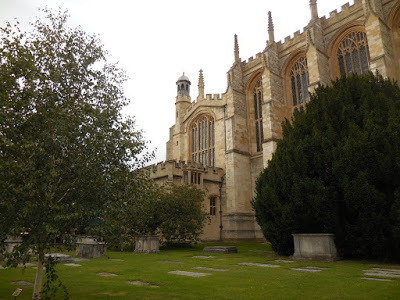
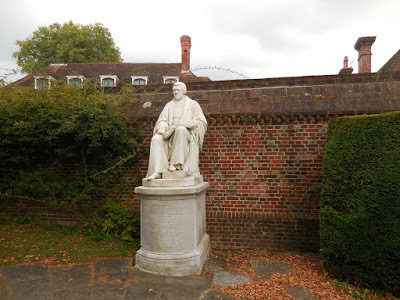
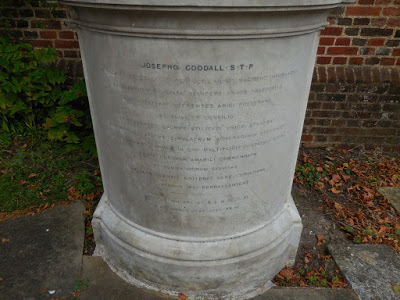
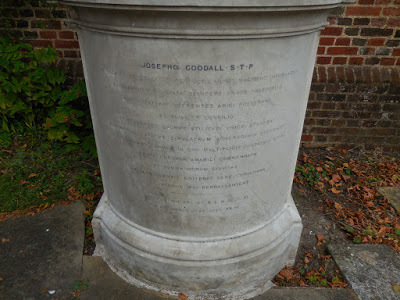
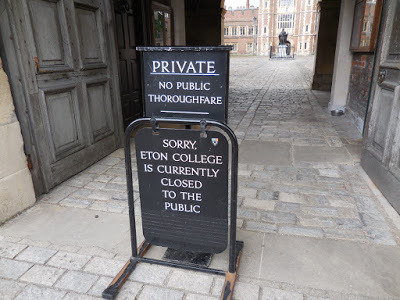
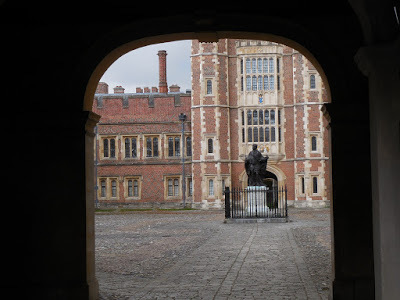
Through the gate, a statue of College founder, King Henry VI (1421-1471)
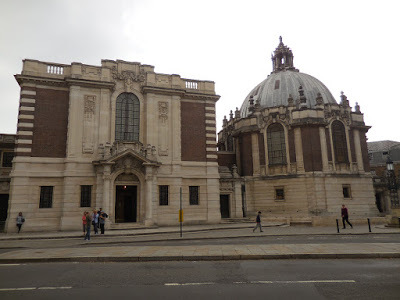
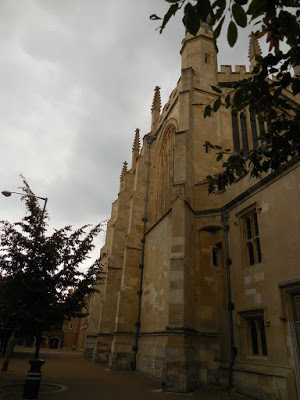
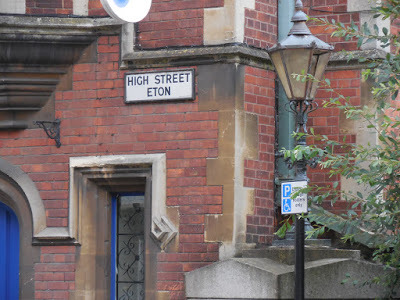
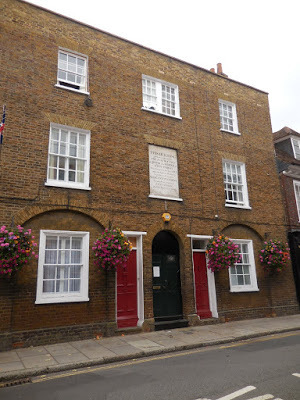

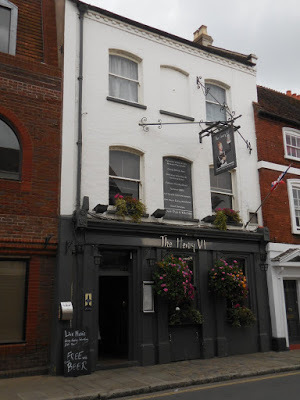
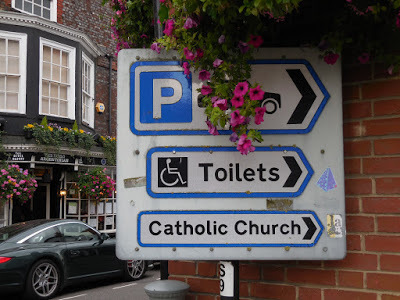
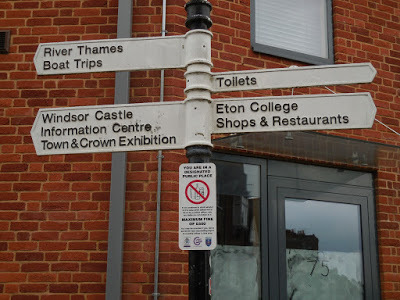
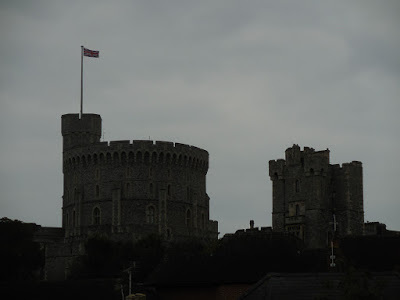
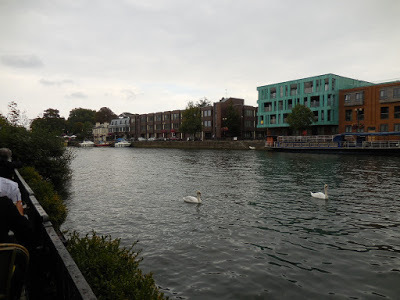
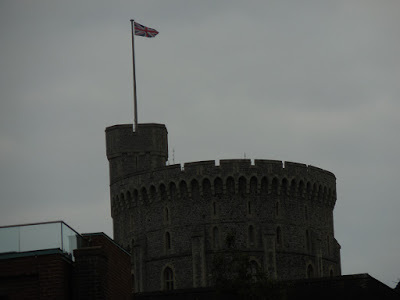
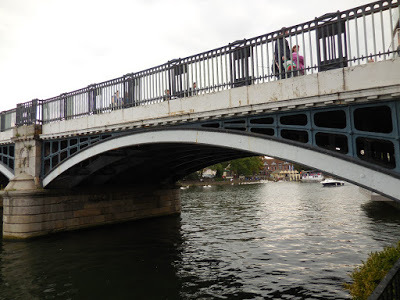
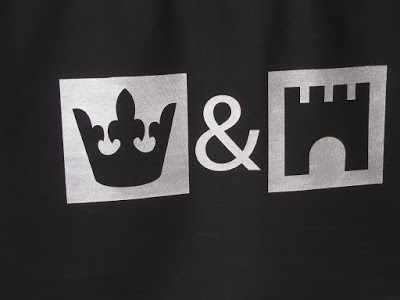
More on our post tour jaunts coming soon!
Published on January 15, 2016 00:00
January 13, 2016
JANE AUSTEN'S REGENCY WORLD MAGAZINE: AN INTERVIEW WITH CHIEF GURU TIM BULLAMORE
Victoria here, catching up with the owner/publisher/editor of JARW.
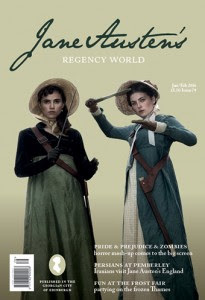 Jan-Feb 2016 issue out now!
Jan-Feb 2016 issue out now!
The magazine's website is here. To Subscribe, click here.
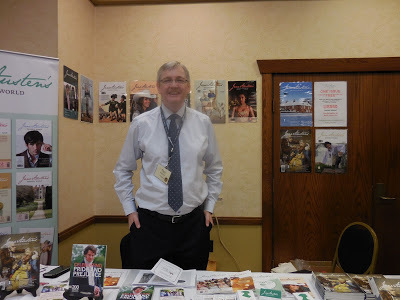
Tim Bullamore, the publisher of Jane Austen's Regency World, is a charming friend and entrepreneur in journalism. I had the good fortune to interview him at the Jane Austen Society of North America's Annual General Meeting held recently in Louisville, Kentucky.
Tim's recent Telegraph obituary of composer/conductor Pierre Boulez is here.
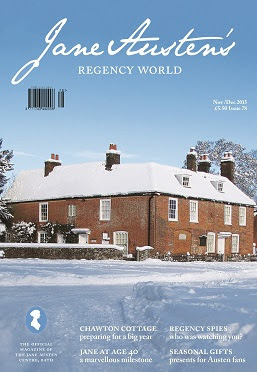 Nov. Dec. 2015 issue
Nov. Dec. 2015 issue
Tim must have to consult his calendar every day to see where he has to be, for his schedule sounds amazingly complicated to a person like me who just sits in front of a computer most of the day. He is a busy journalist, spending several days a week in London as the copy editor for the London Times. He write obituaries for the Daily Telegraph about classical musicians. And, in addition to various teaching assignments, he is the editor and publisher of Jane Austen's Regency World Magazine, which comes out six times a year. And just to provide more variety, his wife holds a university teaching position in Scotland.
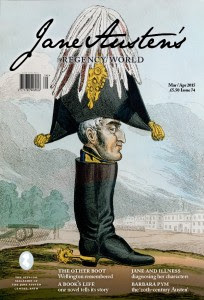
Are you surprised this is my favorite of all Tim's excellent cover images?
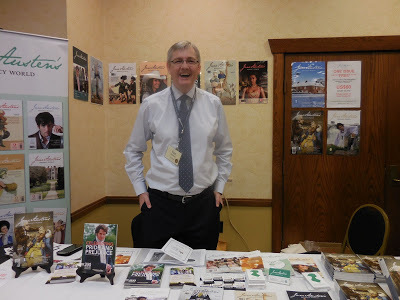
We chatted in the busy emporium at the Louisville AGM where Tim manned a table covered with back issues and subscription forms. He told me how his friends were running the Jane Austen Centre in Bath a few years ago. They confided that their magazine, then part of the Centre's program, was becoming difficult for them to manage. Being a lifelong admirer of Jane Austen, Tim looked into the financial aspects of running the operation and bought it. In the eight years of his leadership, the magazine has excelled in providing interesting and entertaining articles about all aspects of the English Regency and new insights into our favorite author. Not to forget the colorful illustrations -- and news of JA-related events. He is proud of the quality of the printing and binding as well, indeed every aspect of the magazine's production.
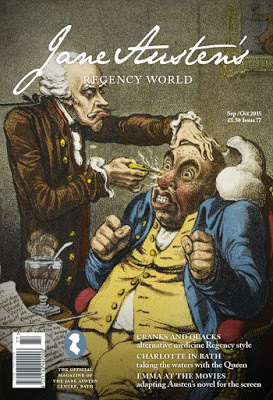
The Sept. Oct. 2015 issue, with a cover caricature from James Gillray in 1801: using science to treat disease; Article by Penelope Friday.
The content of the magazine ranges among academic and historical subjects, Jane Austen's life and times, the mania for Regency dancing, Jane Austen in popular culture, including fan fiction, thus appealing to a variety of audiences.
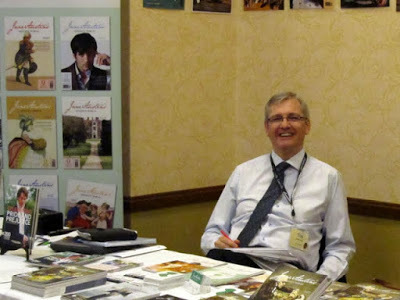
Tim gets a few moments of relaxation in between interviews and courting prospective subscribers.
He spends about a day and a half each week on JARW, working with a small sales staff and editorial consultants. including the renowned Maggie Lane who has written many articles and books on myriad Jane Austen topics. Time says that as a niche produce JARW has reasonable advertising rates, providing about 20% of income. The rest relies upon subscriptions.
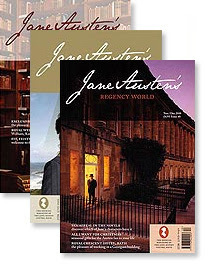
Tim has attended Jane Austen Society events in England, Australia, around Europe, and across the U.S. and Canada. His first JASNA AGM was in Chicago where he was delighted to receive a warm and enthusiastic welcome from North American Austen fans. He has spoken at several events, including a talk on obituaries in the time of Austen, and a thoroughly tongue-in-cheek "Defense of Mr. Wickham," (in Minneapolis, 2013) which to his surprise, several listeners took quite seriously. I found it hilarious, casting Mr. Wickham as the victim of Georgiana Darcy's unsuccessful seductions.
Tim summed up his description of the magazine with an 'elevator' pitch: "It has everything you need to know about Jane Austen, the Georgian period and Regency times, full of news, views, and information, an indispensable guide."
Who could say it better than that? Thanks for an engaging chat, Tim. I look forward to another year of reading pleasure.
 Jan-Feb 2016 issue out now!
Jan-Feb 2016 issue out now!The magazine's website is here. To Subscribe, click here.

Tim Bullamore, the publisher of Jane Austen's Regency World, is a charming friend and entrepreneur in journalism. I had the good fortune to interview him at the Jane Austen Society of North America's Annual General Meeting held recently in Louisville, Kentucky.
Tim's recent Telegraph obituary of composer/conductor Pierre Boulez is here.
 Nov. Dec. 2015 issue
Nov. Dec. 2015 issueTim must have to consult his calendar every day to see where he has to be, for his schedule sounds amazingly complicated to a person like me who just sits in front of a computer most of the day. He is a busy journalist, spending several days a week in London as the copy editor for the London Times. He write obituaries for the Daily Telegraph about classical musicians. And, in addition to various teaching assignments, he is the editor and publisher of Jane Austen's Regency World Magazine, which comes out six times a year. And just to provide more variety, his wife holds a university teaching position in Scotland.

Are you surprised this is my favorite of all Tim's excellent cover images?

We chatted in the busy emporium at the Louisville AGM where Tim manned a table covered with back issues and subscription forms. He told me how his friends were running the Jane Austen Centre in Bath a few years ago. They confided that their magazine, then part of the Centre's program, was becoming difficult for them to manage. Being a lifelong admirer of Jane Austen, Tim looked into the financial aspects of running the operation and bought it. In the eight years of his leadership, the magazine has excelled in providing interesting and entertaining articles about all aspects of the English Regency and new insights into our favorite author. Not to forget the colorful illustrations -- and news of JA-related events. He is proud of the quality of the printing and binding as well, indeed every aspect of the magazine's production.

The Sept. Oct. 2015 issue, with a cover caricature from James Gillray in 1801: using science to treat disease; Article by Penelope Friday.
The content of the magazine ranges among academic and historical subjects, Jane Austen's life and times, the mania for Regency dancing, Jane Austen in popular culture, including fan fiction, thus appealing to a variety of audiences.

Tim gets a few moments of relaxation in between interviews and courting prospective subscribers.
He spends about a day and a half each week on JARW, working with a small sales staff and editorial consultants. including the renowned Maggie Lane who has written many articles and books on myriad Jane Austen topics. Time says that as a niche produce JARW has reasonable advertising rates, providing about 20% of income. The rest relies upon subscriptions.

Tim has attended Jane Austen Society events in England, Australia, around Europe, and across the U.S. and Canada. His first JASNA AGM was in Chicago where he was delighted to receive a warm and enthusiastic welcome from North American Austen fans. He has spoken at several events, including a talk on obituaries in the time of Austen, and a thoroughly tongue-in-cheek "Defense of Mr. Wickham," (in Minneapolis, 2013) which to his surprise, several listeners took quite seriously. I found it hilarious, casting Mr. Wickham as the victim of Georgiana Darcy's unsuccessful seductions.
Tim summed up his description of the magazine with an 'elevator' pitch: "It has everything you need to know about Jane Austen, the Georgian period and Regency times, full of news, views, and information, an indispensable guide."
Who could say it better than that? Thanks for an engaging chat, Tim. I look forward to another year of reading pleasure.
Published on January 13, 2016 00:30
January 11, 2016
WATERLOO DIARY: WOMAN BATTLE ARTIST IN TRAINING
The Juvenilia Press has published selections from the Waterloo Diary of ElizabethThompson, Lady Butler, who had a distinguished career as a painter, mainly of battle scenes. Victoria here. At the October 2015 JASNA-AGM in Louisville, KY, our friends from the Juvenilia Press were on hand with their many editions of Jane Austen's early writings, and this new book. which immediately caught my eye.
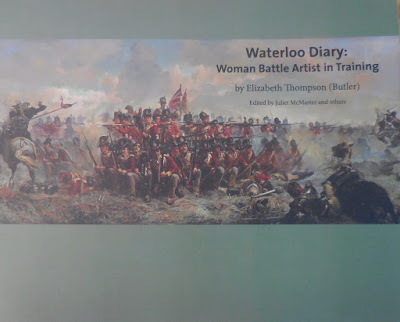 2015
2015
For more information and the order form, click here.
The official description: Elizabeth Thompson (Butler), Waterloo Diary: Woman Battle Artist in Training:
'inspired by a visit to the field of Waterloo, "that inexhaustible battle", and determined to become a painter of battle scenes, young Elizabeth Thompson (later Butler) records her training and the prejudices she faced as a woman painter: until she scores a huge success at the Royal Academy with what Ruskin called "the first fine Pre-Raphaelite picture of battle".
Edited by Juliet McMaster and Others.'

The painting of the Scots charg
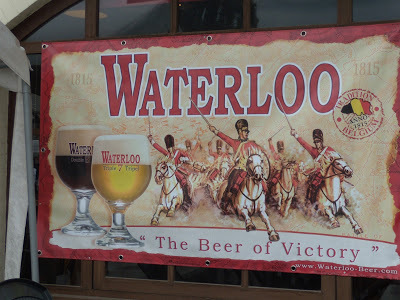
Elizabeth Butler's tour of Waterloo, which The most famous painting of the battle of Waterloo is probably “Scotland Forever” by Lady Elizabeth Butler. The key to the famous lady battle painter’s was that her work struk a chord with the British public, if she had been a TV producer her ratings would have been off the charts. Waterloo, like the Crimea, held a special place in Victorian National conciousness.
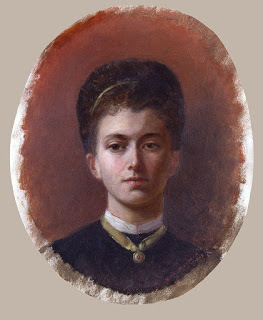 Self-Portrait 1869
Self-Portrait 1869
Born at Villa Claremont in Lausanne, Switzerland, she specialized in painting scenes from British military campaigns and battles, including the Crimean War and the Battle of Waterloo. The Roll Call (purchased by Queen Victoria), The Defence of Rorke's Drift, and Scotland Forever! , showing the Scots Greys at the Battle of Waterloo, (Leeds Art Gallery) are among her better-known works. She wrote about her military paintings in an autobiography published in 1922: "I never painted for the glory of war, but to portray its pathos and heroism".[2][3][4]
She was the daughter of Thomas James Thompson (1812–1881) and his second wife Christiana Weller (1825–1910). Her sister was the noted essayist and poet Alice Meynell. Elizabeth began receiving art instruction in 1862, while growing up in Italy. In 1866 she went to South Kensington, London and entered the Female School of Art. She became a Roman Catholic along with the rest of the family after they moved to Florence in 1869. While in Florence, under the tutelage of the artist Giuseppe Bellucci (1827–1882), Elizabeth attended the Accademia di Belle Arti. She signed her works as E.B.; Elizth. Thompson or Mimi Thompson (she was called "Mimi" from her childhood).[2][3][4]
Initially she concentrated on religious subjects like The Magnificat (1872), but upon going to Paris in 1870 she was exposed to battle scenes from Jean Louis Ernest Meissonier and Édouard Detaille, and switched her focus to war paintings. With the painting Missing (1873) a Franco-Prussian War battle scene, depicting the common soldiers' suffering and heroism, she earned her first submission to the Royal Academy. After The Roll Call was shown in 1874 at the Academy, she became a nineteenth-century celebrity, due to the paintings' immense popularity. As the paintings toured Europe, along with photographs of Elizabeth, she gained even more notice because people found out that she was both young and pretty, something normally not associated with painters of battle scenes. It also helped that during this time there was an incredible amount of Victorian pride and romanticism for the growing British Empire.[2][3][4] Lady Butler's topics reflected such romanticism but her paintings were generally realistic in detail with aspects such as confusion, mud and exhaustion being accurately portrayed. Her works tend to focus on British troops shown in action, or shortly after it, but avoiding moments of close hand-to-hand combat. They are often shown as their opponents might have seen them, but relatively few of the opponents themselves are shown.
Her career and fame peaked with her 11 June 1877 marriage to Sir William Francis Butler (1838–1910), a distinguished officer of the British Army, from Tipperary in Ireland. Not only was she now married, breaking the heart of many young men, but now she would travel to the far reaches of the Empire with her husband and raise their six children. During this time Lady Butler came under the influence of her Irish husband's belief that the colonial imperialism of the United Kingdom and other European powers might not be in the best interest of the natives in colonial lands. However she continued to paint scenes showing the valour of the ordinary British soldier. Butler also did some black and white illustration, including of poems by her sister, Alice Meynell, and of works by Thackeray.
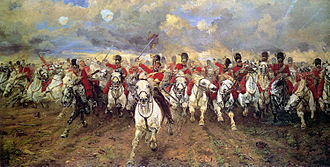 Scotland Forever!
, 1881, Leeds Art GalleryOn her husband's retirement from the army, she moved with him to Ireland, where they lived at Bansha Castle, County Tipperary. She showed pictures at the Royal Hibernian Academy from 1892. Among the paintings that she took with her to Co. Tipperary was a set of water-colours that she had painted while with her husband in Palestine. During the Irish Civil War they were transferred to her daughter in Gormanston Castle for safe keeping, but were almost all destroyed later by German bombs in London during World War II.
Scotland Forever!
, 1881, Leeds Art GalleryOn her husband's retirement from the army, she moved with him to Ireland, where they lived at Bansha Castle, County Tipperary. She showed pictures at the Royal Hibernian Academy from 1892. Among the paintings that she took with her to Co. Tipperary was a set of water-colours that she had painted while with her husband in Palestine. During the Irish Civil War they were transferred to her daughter in Gormanston Castle for safe keeping, but were almost all destroyed later by German bombs in London during World War II.
Lady Butler was widowed in 1910, but continued to live at Bansha until 1922, when she took up residence with the youngest of her six children, Eileen, Viscountess Gormanston, at Gormanston Castle, County Meath. She died there shortly before her 87th birthday and was interred at nearby Stamullen graveyard.[2][3][

 2015
2015For more information and the order form, click here.
The official description: Elizabeth Thompson (Butler), Waterloo Diary: Woman Battle Artist in Training:
'inspired by a visit to the field of Waterloo, "that inexhaustible battle", and determined to become a painter of battle scenes, young Elizabeth Thompson (later Butler) records her training and the prejudices she faced as a woman painter: until she scores a huge success at the Royal Academy with what Ruskin called "the first fine Pre-Raphaelite picture of battle".
Edited by Juliet McMaster and Others.'

The painting of the Scots charg

Elizabeth Butler's tour of Waterloo, which The most famous painting of the battle of Waterloo is probably “Scotland Forever” by Lady Elizabeth Butler. The key to the famous lady battle painter’s was that her work struk a chord with the British public, if she had been a TV producer her ratings would have been off the charts. Waterloo, like the Crimea, held a special place in Victorian National conciousness.
 Self-Portrait 1869
Self-Portrait 1869Born at Villa Claremont in Lausanne, Switzerland, she specialized in painting scenes from British military campaigns and battles, including the Crimean War and the Battle of Waterloo. The Roll Call (purchased by Queen Victoria), The Defence of Rorke's Drift, and Scotland Forever! , showing the Scots Greys at the Battle of Waterloo, (Leeds Art Gallery) are among her better-known works. She wrote about her military paintings in an autobiography published in 1922: "I never painted for the glory of war, but to portray its pathos and heroism".[2][3][4]
She was the daughter of Thomas James Thompson (1812–1881) and his second wife Christiana Weller (1825–1910). Her sister was the noted essayist and poet Alice Meynell. Elizabeth began receiving art instruction in 1862, while growing up in Italy. In 1866 she went to South Kensington, London and entered the Female School of Art. She became a Roman Catholic along with the rest of the family after they moved to Florence in 1869. While in Florence, under the tutelage of the artist Giuseppe Bellucci (1827–1882), Elizabeth attended the Accademia di Belle Arti. She signed her works as E.B.; Elizth. Thompson or Mimi Thompson (she was called "Mimi" from her childhood).[2][3][4]
Initially she concentrated on religious subjects like The Magnificat (1872), but upon going to Paris in 1870 she was exposed to battle scenes from Jean Louis Ernest Meissonier and Édouard Detaille, and switched her focus to war paintings. With the painting Missing (1873) a Franco-Prussian War battle scene, depicting the common soldiers' suffering and heroism, she earned her first submission to the Royal Academy. After The Roll Call was shown in 1874 at the Academy, she became a nineteenth-century celebrity, due to the paintings' immense popularity. As the paintings toured Europe, along with photographs of Elizabeth, she gained even more notice because people found out that she was both young and pretty, something normally not associated with painters of battle scenes. It also helped that during this time there was an incredible amount of Victorian pride and romanticism for the growing British Empire.[2][3][4] Lady Butler's topics reflected such romanticism but her paintings were generally realistic in detail with aspects such as confusion, mud and exhaustion being accurately portrayed. Her works tend to focus on British troops shown in action, or shortly after it, but avoiding moments of close hand-to-hand combat. They are often shown as their opponents might have seen them, but relatively few of the opponents themselves are shown.
Her career and fame peaked with her 11 June 1877 marriage to Sir William Francis Butler (1838–1910), a distinguished officer of the British Army, from Tipperary in Ireland. Not only was she now married, breaking the heart of many young men, but now she would travel to the far reaches of the Empire with her husband and raise their six children. During this time Lady Butler came under the influence of her Irish husband's belief that the colonial imperialism of the United Kingdom and other European powers might not be in the best interest of the natives in colonial lands. However she continued to paint scenes showing the valour of the ordinary British soldier. Butler also did some black and white illustration, including of poems by her sister, Alice Meynell, and of works by Thackeray.
 Scotland Forever!
, 1881, Leeds Art GalleryOn her husband's retirement from the army, she moved with him to Ireland, where they lived at Bansha Castle, County Tipperary. She showed pictures at the Royal Hibernian Academy from 1892. Among the paintings that she took with her to Co. Tipperary was a set of water-colours that she had painted while with her husband in Palestine. During the Irish Civil War they were transferred to her daughter in Gormanston Castle for safe keeping, but were almost all destroyed later by German bombs in London during World War II.
Scotland Forever!
, 1881, Leeds Art GalleryOn her husband's retirement from the army, she moved with him to Ireland, where they lived at Bansha Castle, County Tipperary. She showed pictures at the Royal Hibernian Academy from 1892. Among the paintings that she took with her to Co. Tipperary was a set of water-colours that she had painted while with her husband in Palestine. During the Irish Civil War they were transferred to her daughter in Gormanston Castle for safe keeping, but were almost all destroyed later by German bombs in London during World War II.Lady Butler was widowed in 1910, but continued to live at Bansha until 1922, when she took up residence with the youngest of her six children, Eileen, Viscountess Gormanston, at Gormanston Castle, County Meath. She died there shortly before her 87th birthday and was interred at nearby Stamullen graveyard.[2][3][

Published on January 11, 2016 00:00
Kristine Hughes's Blog
- Kristine Hughes's profile
- 6 followers
Kristine Hughes isn't a Goodreads Author
(yet),
but they
do have a blog,
so here are some recent posts imported from
their feed.


